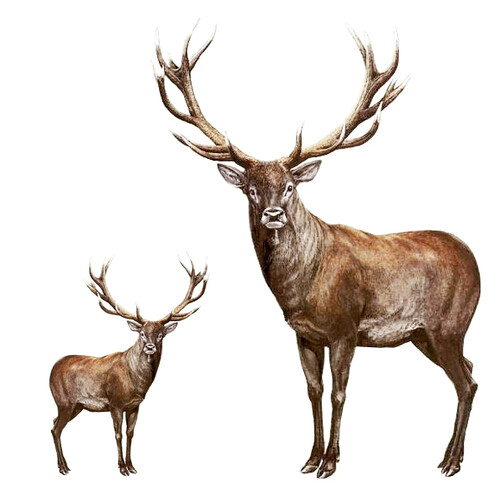1/6th Red Deer
April 8, 2012
Massive global evolutionary shrinkage may only manifest itself when it’s already too late. Even then it’s difficult to predict how much time it will take before man has adjusted to the new circumstances. Our best indication of human evolutionary shrinkage is the case of Homo floresiensis who, when he became isolated on the island of Flores in Indonesia, shrunk to the respectable height of just 106cm. Unfortunately it is as yet unclear when Flores Man arrived on the island and what their height was when they did. Therefor it is impossible to determine how long it took them to shrink.
In the Pleistocene the dwarfing of large mammals trapped on islands like elephants, deer, and hippopotami occurred repeatedly. Unfortunately, as is the case with H. floresiensis, evolutionary rates cannot be estimated because the entry of the ancestor onto the island, and appearance of the dwarf form, are poorly dated. However Prof. Adrian Lister investigated one case of dwarfed red deer on the island of Jersey in which the dwarf is well dated and the full-sized ancestor is found in demonstrably older deposits on the island. Therefor a good estimate can be made for the duration of the isolation leading to dwarfing. The deer on Jersey were reduced to one sixth of their body weight in less than 6000 years. And although this is fast on the timescale of evolution, we need something a little faster.